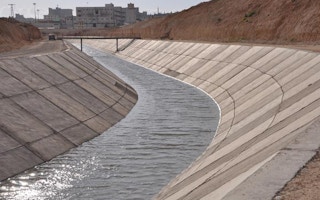Upgrading the country’s irrigation system to improve its efficiency to 80 per cent will require around VND20 trillion (nearly US$1 billion) under a plan drawn up by the Ministry of Agriculture and Rural Development.
The plan seeks to utilise irrigation works nation-wide to increase, by 2020, the total irrigated areas by 5 per cent and reduce electricity and water use per hectare by 10 per cent.
Deputy minister of agriculture Hoang Van Thang told a recent meeting that though the country got a lot of rainfall, irrigation was widespread because of the uneven distribution of rainwater in terms of location and time.
The country has 904 large to medium- sized irrigation works that can provide water for 200 hectares of fields or more. Of them 11 irrigate over 100,000ha, while more than 100 others are capable of irrigating 2,000ha or more.
Together they irrigate 5.5 million hectares and keep out saltwater from 0.87 million hectares and help clean alum for 1.6 million hectares.
There are also more than 8,000 other facilities like weirs, sluice gates, and pumping stations.
There are 6,831 dams of various kinds with a combined capacity of 50 billion cubic metres of water.
They not only provide water for 80,000ha of lands and people’s daily use, but also help generate electricity.
The largest ones include Hoa Binh, Thac Ba, Son La, Na Hang, Nui Coc, Cam Son, Cua Dai, Song Muc, Ban Ve, Ke Go, and Dau Tieng.
But many of the old facilities have seriously deteriorated, badly affecting water supply, according to Nguyen Duy Hien, deputy director of the General Irrigation and Water Management Office.
Many pumps were installed in the 1960s, and their efficiency has been down to just 70-75 per cent now, he said, pointing out that many reservoirs were 30 to 40 years old.
In addition, many of the works have been affected by illegal encroachment by people and severe pollution due to wastewater from industrial parks, farms, and residential areas, he said.
Consequently, many irrigation works operate at only 60-65 per cent capacity, some at a mere 30 per cent, he said. Their reduced efficiency has also increased the cost of operating them because of the great amounts of water and electricity wasted.
The plan would include some drastic measures to resolve all these problems, Thang added.










